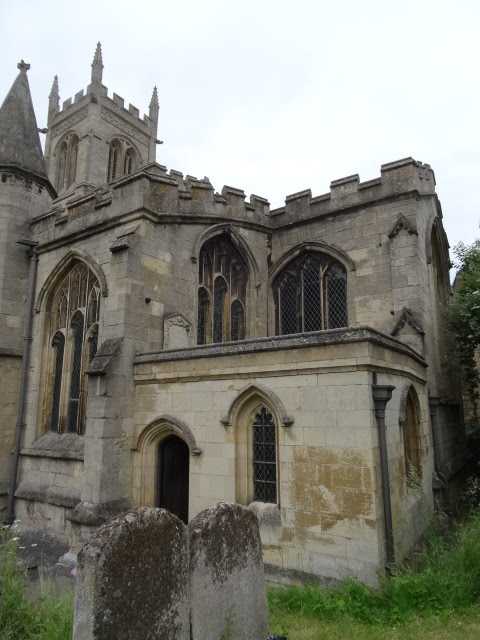St John's church is quite small, but has a quiet, workman-like grandeur - it was all rebuilt sometime in the Late Middle Ages and is hence all one consistent style - Perp. It is tucked away at one corner of Red Lion Square, diagonally opposite the grander All Saints church, and mostly hidden behind the buildings in the High St. The design of the tower is very good, and I like the solidity of the west front with its layering and the way that the west door is hewn from the mass of masonry reminding me of the west front of St Martin's across the Welland. In fact by comparing the images on my blogpost on St Martin's I will make so bold as to suggest both churches are by the same master mason. There is a pretty little south porch that looks like an addition to the original design, that gives access to a small, secluded graveyard. The plan is very simple - a basilica with a chancel projecting one bay east. The tower is tucked into the NW corner, and somehow that saves the interior of St John's from being too rational an experience, the tower base serving as a sort of halfway, or indeed liminal space, between the outside and the sacred interior. The piers, I think, follow an East Anglian pattern - they certainly put me in mind of the simpler piers at South Creake in Norfolk. The nave roof is populated with angels, but as to Medieval furnishings there is some glass left in three of the windows (N aisle), and there are wooden parclose screens remaining in both aisles, but everything else has been lost. There are a lot of wall memorials, mostly Georgian and early Victorian and classical. The church was restored in 1856 by Edward Browning, who we have encountered many times on this blog.
Wednesday, 13 June 2018
St John the Baptist, Stamford
When a child I was told Stamford was remarkable, not only because it was beautiful, a bit posh, but because it straddled 3/4 counties (depending on what county the Soke of Peterborough was then annexed to) and had six churches. Walking round Stamford its quite easy to be taken up with the town's Georgian aspect, however those six churches take us right back to the Middle Ages in a way that is often difficult in towns of equal antiquity with the exception perhaps of York and Norwich. Medieval urbanism, to me at least has a sort of intensity of vision, an element of the fantastical that is deeply satisfying.
Subscribe to:
Post Comments (Atom)














No comments:
Post a Comment